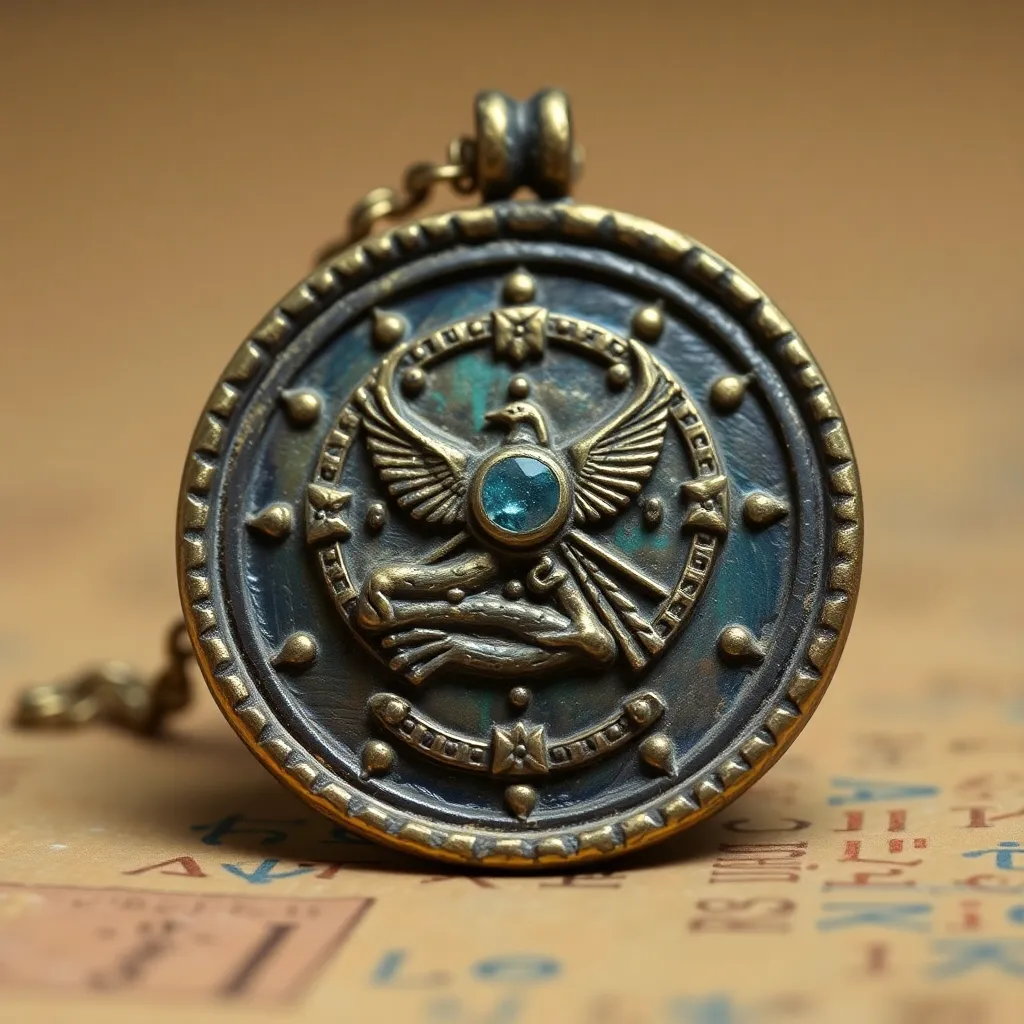Amulets and Their Connection to Egyptian Astronomy
I. Introduction
Amulets played a crucial role in ancient Egyptian culture, symbolizing protection, power, and connection to the divine. These small objects, often crafted with intricate designs, were believed to hold magical properties that could ward off evil and bring good fortune to their bearers. The ancient Egyptians had a profound understanding of the universe, and their astronomy was intricately woven into their daily lives and spiritual practices.
This article will explore the interplay between amulets and astronomical beliefs in ancient Egypt, examining how celestial bodies influenced the design and significance of these protective objects.
II. Historical Context of Amulets in Ancient Egypt
The origins of amulets in ancient Egypt can be traced back to the Pre-Dynastic period, evolving through various dynasties and becoming more sophisticated over time. Initially made from simple materials like clay and stone, amulets began to incorporate a variety of materials, including precious metals, faience, and glass.
Common symbols found in amulet creation included:
- The Eye of Horus: representing protection and healing
- The Scarab: symbolizing rebirth and transformation
- The Ankh: a representation of life and immortality
Amulets were not only worn for spiritual reasons but were also used in burial practices to ensure safe passage to the afterlife. Their cultural significance extended into everyday life, providing comfort and security to individuals in various circumstances.
III. The Role of Astronomy in Ancient Egyptian Society
Celestial bodies held immense importance in ancient Egyptian mythology. The Egyptians observed the movements of the stars and planets, which played a significant role in their religious beliefs and agricultural practices. The annual flooding of the Nile, crucial for farming, was closely tied to the heliacal rising of Sirius, marking the start of the inundation season.
Agricultural calendars were structured around astronomical events, guiding planting and harvesting times. Moreover, the Egyptians believed that the movements of celestial bodies were reflections of divine actions, influencing their religious practices and rituals.
IV. Symbolism of Celestial Bodies in Amulet Design
Celestial symbols were prevalent in amulet design, representing various aspects of Egyptian mythology. Key symbols included:
- Stars: Often associated with the afterlife and the soul’s journey.
- Planets: Each planet had specific deities associated with it, influencing the design of amulets.
- Constellations: Represented gods and were believed to hold protective powers.
Amulets featuring these celestial motifs often served dual purposes, providing both protection and a connection to the divine. The symbolism inherent in these designs reinforced the belief that the cosmos was interwoven with earthly existence.
V. Case Studies of Notable Amulets Linked to Astronomy
Several notable amulets from ancient Egypt illustrate the connection between astronomy and amulet design:
- The Scarab: This amulet is linked to the sun god Ra, symbolizing rebirth and transformation. The scarab beetle’s habit of rolling dung was seen as a metaphor for the sun’s daily journey across the sky.
- The Ankh: Often depicted alongside celestial symbols, the ankh represents life and the harmony between the physical and spiritual realms, embodying the connection to the divine order of the universe.
- Constellation Amulets: Some amulets depicted specific constellations, each associated with a particular deity, believed to provide guidance and protection to the wearer.
VI. Astronomical Events and Their Influence on Amulet Creation
Astronomical events significantly influenced the design and crafting of amulets. Key events included:
- Solar and Lunar Eclipses: These phenomena were viewed as powerful omens, leading to the creation of amulets intended to protect against their potentially harmful effects.
- Heliacal Rising of Sirius: This event marked the beginning of the Nile’s flooding and was celebrated with the crafting of amulets that symbolized fertility and abundance.
- Seasonal Changes: Amulets were often crafted to coincide with seasonal cycles, providing protection and blessings throughout the year.
VII. Modern Interpretations and Discoveries
Recent archaeological findings have shed light on the connection between amulets and astronomy in ancient Egypt. Excavations have uncovered amulets with celestial symbols, indicating their significance in both daily life and burial practices. Modern technology, such as advanced imaging techniques, has allowed researchers to analyze these artifacts more thoroughly, revealing insights into their creation and use.
There is a growing interest in the cultural significance of amulets in modern Egypt. Many contemporary artists and scholars are exploring how ancient practices influence modern beliefs and customs, creating a bridge between past and present.
VIII. Conclusion
The exploration of amulets and their connection to Egyptian astronomy reveals a rich tapestry of beliefs and practices that shaped ancient Egyptian society. Amulets served not only as protective objects but also as symbols of the deep relationship the Egyptians had with the cosmos.
As we reflect on the key points discussed, it becomes clear that the legacy of amulets and Egyptian astronomy continues to inspire and intrigue researchers and enthusiasts alike. Future directions for research may include further archaeological explorations and the use of modern technology to enhance our understanding of these fascinating artifacts.




